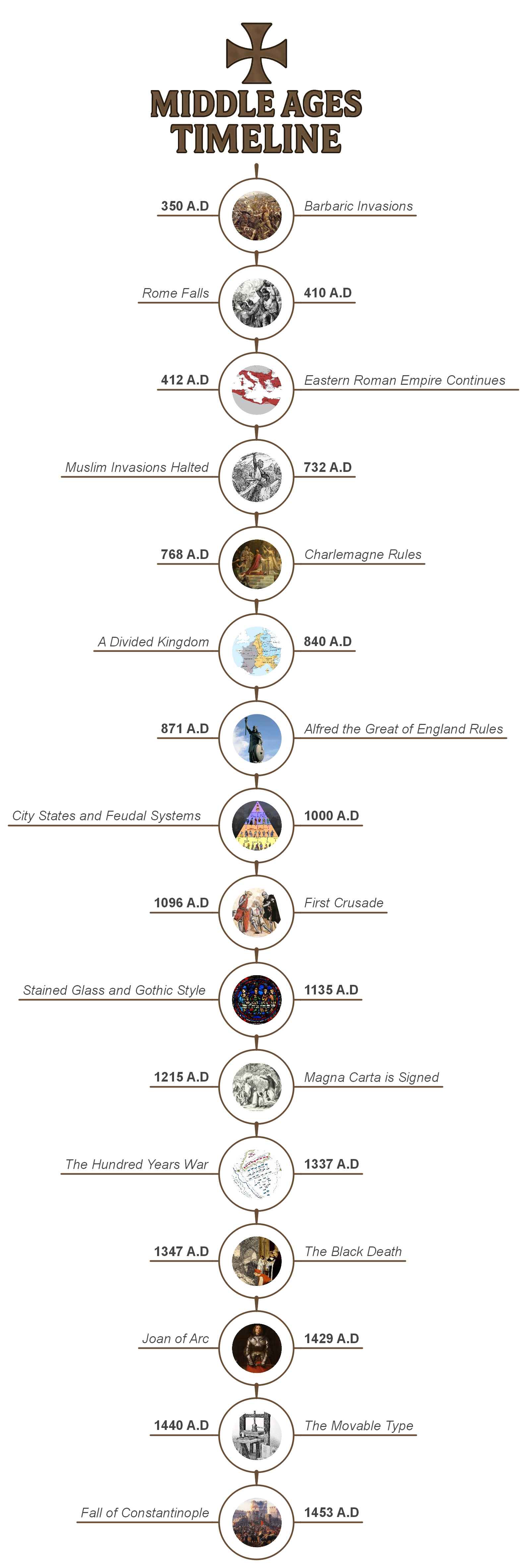Let's go back to the time right after Rome fell and before the Renaissance started. This was the Middle Ages. Some called it the "Dark Ages," because they thought nothing good happened. But they were wrong. This time gave us stunning Gothic cathedrals, glowing stained-glass windows, and amazing handwritten books. It also shaped chivalry and honor. Without the Middle Ages, modern Europe wouldn't look the same.
It was a time of castles, crusades, and knights. A world where power shifted constantly, and history was written by the brave and bold.
This timeline is your map through the Middle Ages. Let's see how it all happened.
In this article
Part 1: The Middle Ages Timeline
The Middle Ages, also called the Medieval Period, lasted from around 500 AD to 1500 AD. It started after the Western Roman Empire fell and ended when the Renaissance began. Historians break it into three parts. These are the Early Middle Ages (c. AD 500-1000), the High Middle Ages (c. AD 1000-1300), and the Late Middle Ages (c. AD 1300-1500).
Now, let's take a closer look at what happened during these years.
350 A.D: Barbaric Invasions
As the Roman Empire grew weaker, outside tribes saw a chance to move in. Groups like the Anglo-Saxons, Huns, Visigoths, and Vandals began to invade. Some came to raid and take what they could. Others were looking for land, wealth, or a better life.
Many didn't leave. They stayed and built new homes on Roman land. These invasions changed Europe. They set the stage for new kingdoms to rise.
410 A.D: Rome Falls
In 410, Rome was attacked and sacked for three days by Alaric, the Visigoth king. That was just the beginning of the end for the Western Roman Empire.
By 476, a Germanic leader named Odoacer kicked out the last Roman emperor, Romulus Augustus. It was the official fall of Western Rome, and the start of a brand new era.
412 A.D: Eastern Roman Empire Continues
While the West fell apart, the eastern half of the empire kept going strong. Its capital, Constantinople, was protected by massive walls built around 412.
Justinian I came to power later and dreamed big. He wanted to bring back the glory of Rome. He couldn't quite manage it. But his rule helped keep ancient Roman culture alive a while longer.
732 A.D: Muslim Invasions Halted
Muslim armies were making big advances across Europe from the south. And it looked like nothing could stop them. But then came Charles Martel, the Frankish king.
In 732, he led a fierce battle and stopped the Muslim forces at the Battle of Tours. That victory kept northern Europe from falling under Muslim rule. Yep, it shaped the future of the continent.
768 A.D: Charlemagne Rules
Charles Martel's grandson, Charlemagne, wasn't just a king - he was a conqueror with a mission. He wanted to spread Christianity and build a united empire in Europe.
He was crowned "Emperor of the Romans" in 800. His reign saw the rise of early castles and a spark of learning and order in a chaotic world. He died in 814, but left a powerful legacy.
840 A.D: A Divided Kingdom
After Charlemagne's death, things got messy. His grand empire didn't last long. When his son died, the land was split into three parts.
This division made the region vulnerable. Viking raids and invasions increased. At this time, small kingdoms had to find new ways to defend themselves. It was the beginning of the feudal system and more local control.
871 A.D: Alfred the Great of England Rules
Alfred wasn't just any king - he earned the title "the Great." In 878, he beat back the Viking invaders and later took over London in 886.
He didn't stop at warfare. Alfred encouraged learning and education, setting up schools. He also made a deal with the Danes, splitting England and bringing a bit of peace to a divided land.
1000 A.D: City States and Feudal Systems
In Italy, powerful cities like Rome, Florence, and Venice began acting like mini-countries known as city-states. Meanwhile, feudalism was spreading through Europe.
This system gave land to lords in exchange for military help. Lords then had knights, and peasants worked the land. It sounds complicated, but it kept things running in a world without strong central governments.
1096 A.D: First Crusade
Pilgrims once traveled to the Holy Land freely. But when the Seljuk Turks took control, they were banned. That sparked a call to arms.
The Pope urged Christian warriors to take back the Holy Land. The First Crusade was launched in 1096. By 1099, Jerusalem was taken. It was the first of many crusades; nine in total, spanning nearly two centuries.
1135 A.D: Stained Glass and Gothic Style
The Gothic style burst onto the scene in Paris when the St. Denis Abbey was rebuilt. It was the first to feature the tall arches and stained glass windows we know today.
These stunning windows told Bible stories in color and light. At the same time, monks across France were copying holy books by hand. They added beautiful illustrations and decorations in the margins.
1215 A.D: Magna Carta is Signed
King John of England wasn't exactly popular. His nobles rebelled. But instead of tossing him out, they made him sign a revolutionary document.
The Magna Carta declared that kings didn't have divine power above the law. It laid the groundwork for future governments based on rights and justice, not just royal rule.
1337 A.D: The Hundred Years War
Edward III of England believed he had a right to the French throne. So in 1337, he declared war, and that war dragged on for more than 100 years.
It wasn't nonstop fighting. There were breaks and peace talks. But the rivalry between France and England flared up again and again until 1453. The war changed both nations forever.
1347 A.D: The Black Death
In 1347, a deadly plague arrived in Italy by sea. It spread like wildfire, carried by fleas on rats and ships moving between cities.
Victims developed painful black boils and died quickly. It was terrifying. Nearly one-third of Europe's population perished. The Black Death changed everything, from the economy to how people thought about life and death.
1429 A.D: Joan of Arc
Joan of Arc was just a teenage girl when she claimed to hear voices from God, telling her to help France. And she did.
In 1429, she led troops to a huge victory at the Battle of Orleans. But later, she was captured by the English. She was accused of being a witch and burned at the stake. She became a martyr - and a legend.
1440 A.D: The Movable Type
Johannes Gutenberg changed the world with a new invention - the printing press. With movable type, books no longer had to be copied by hand.
By 1455, the first printed Bible was made. Ideas could now spread faster than ever before. It marked the beginning of the end of the Middle Ages and set the stage for the modern world.
1453 A.D: Fall of Constantinople
The Fall of Constantinople occurred in 1453 A.D. The Ottoman Empire, led by Sultan Mehmed II, captured the Byzantine capital after a long siege. The city's massive walls, once thought impenetrable, were finally breached using advanced cannons.
This event marked the end of the Byzantine Empire and is considered a key moment in history. It signaled the end of the Middle Ages and the beginning of the Renaissance and Early Modern period.
Part 2: How to Make the Middle Ages Timeline in EdrawMind?
The Middle Ages were full of important and significant changes in history. A timeline can help you see how everything fits together.
If you're new to making timelines, EdrawMind is an easy tool to try. Here's how you can make a Middle Ages timeline with EdrawMind:
Step 1: Sign in & Start a New Timeline
- Open EdrawMind or use EdrawMind online in your browser.
- Log in using your social media account, or create a free Wondershare account.
- On the homepage, click the Create button at the top left.
- Choose Local MindMap to open a new file and start your timeline.
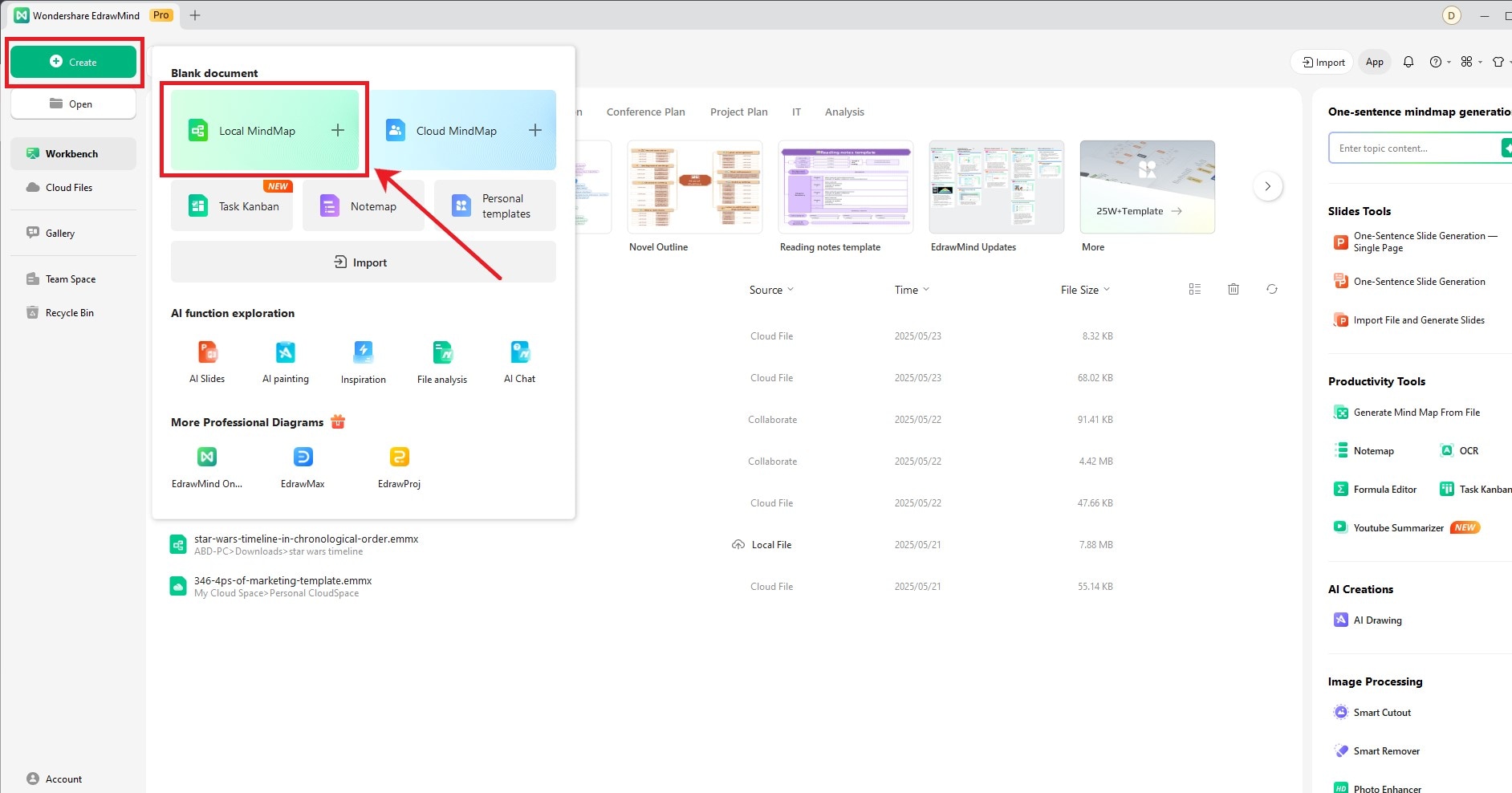
Step 2: Change to a Timeline Layout
- Click on the Main Idea in your new file.
- A small menu will appear next to it.
- From the layout options, choose Timeline (down) to turn your map into a timeline.
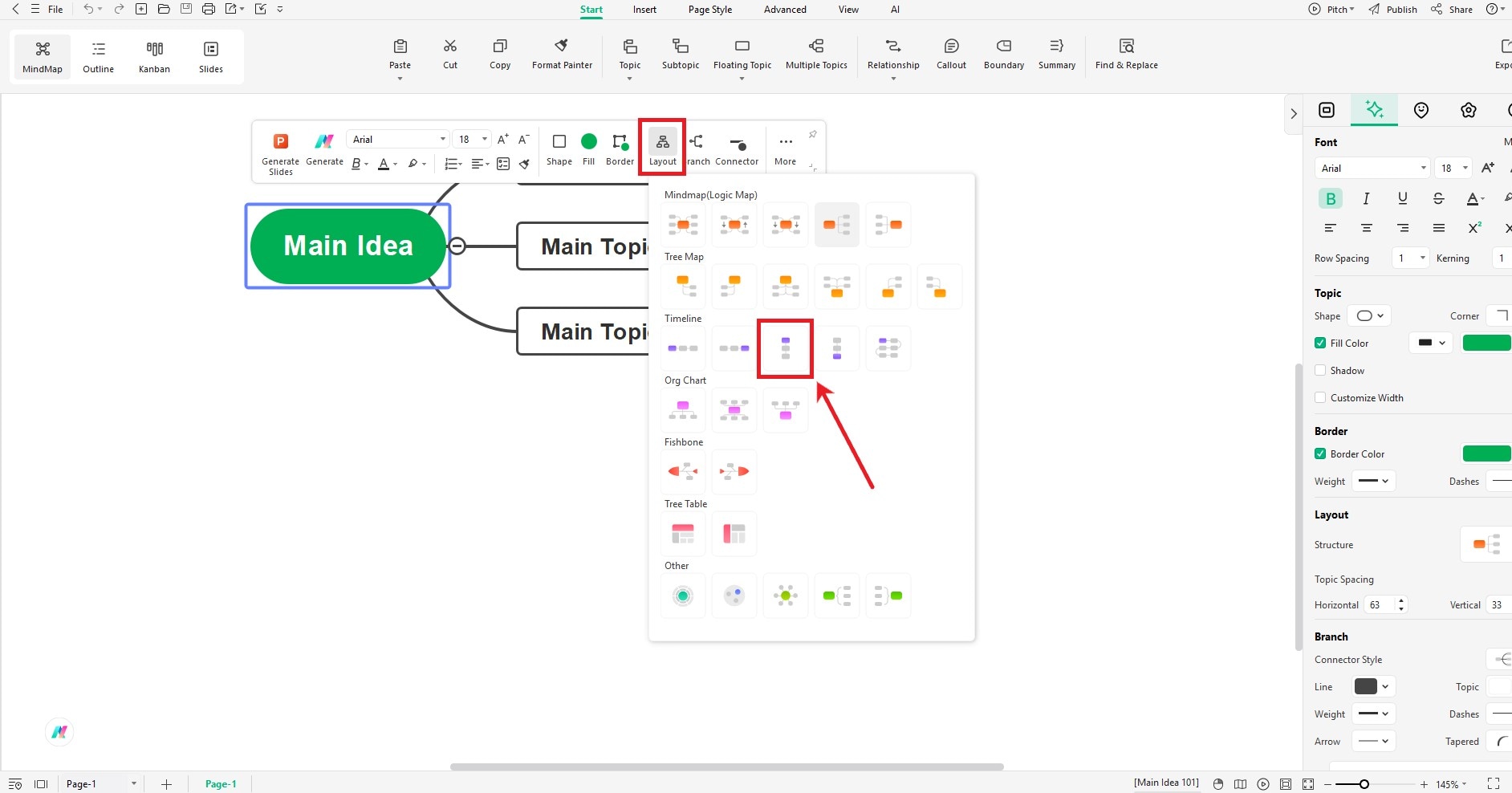
Step 3: Add More Topics and Subtopics
- Click on the Main Idea.
- Click More on the small menu that appears.
- Choose Topic from the list to add a new event or point to your timeline.
- If you want to add details under one of your main events, click on it and then click Subtopic to add more information.
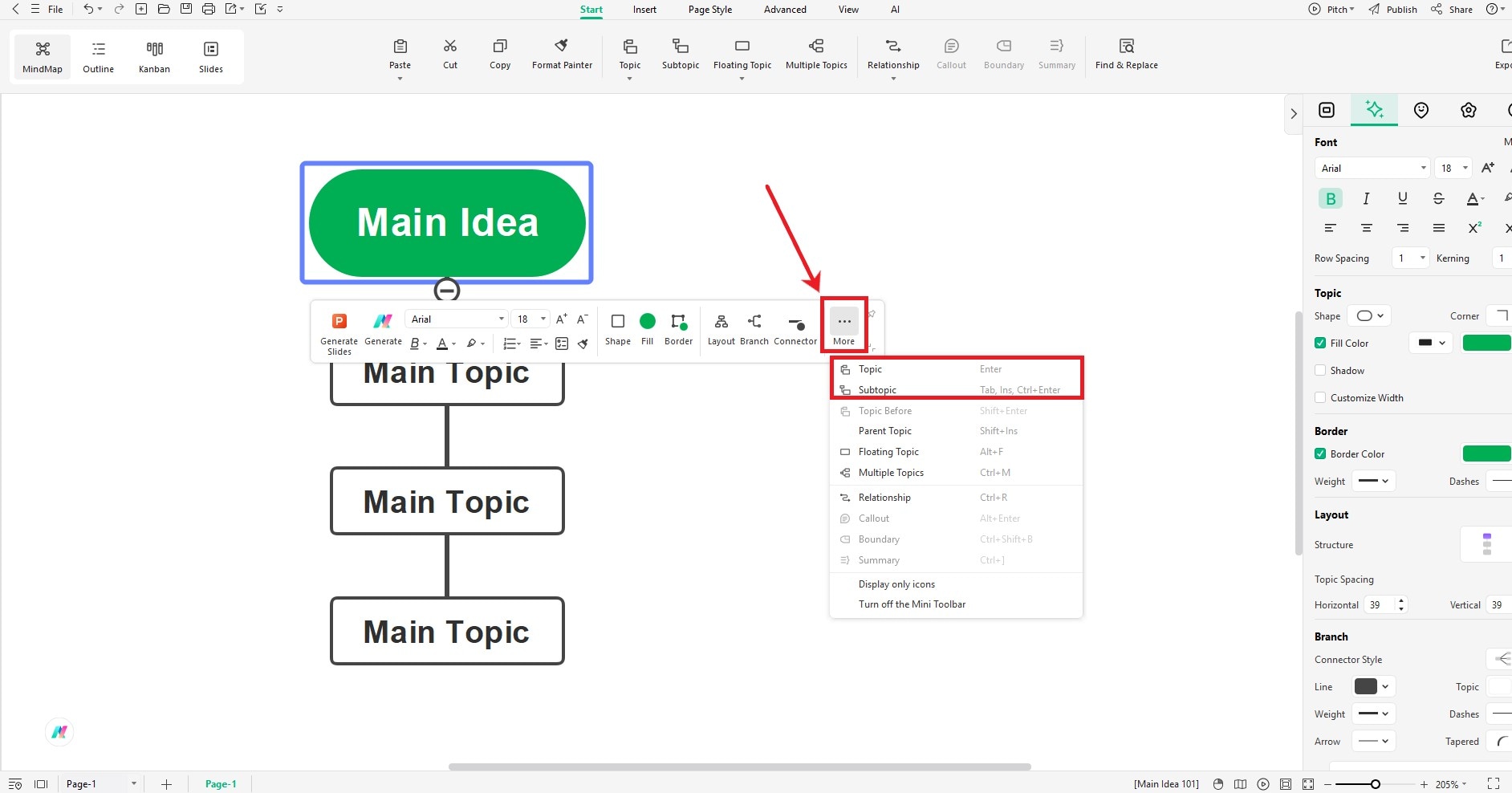
Step 4: Customize the Timeline
- Select one entry or the entire timeline at once.
- Use the floating menu and the right toolbar to customize the topics.
- Double-click any topic and start typing to enter your own content.
- Use the floating menu or the right toolbar to change the font size, color, style, and other properties.
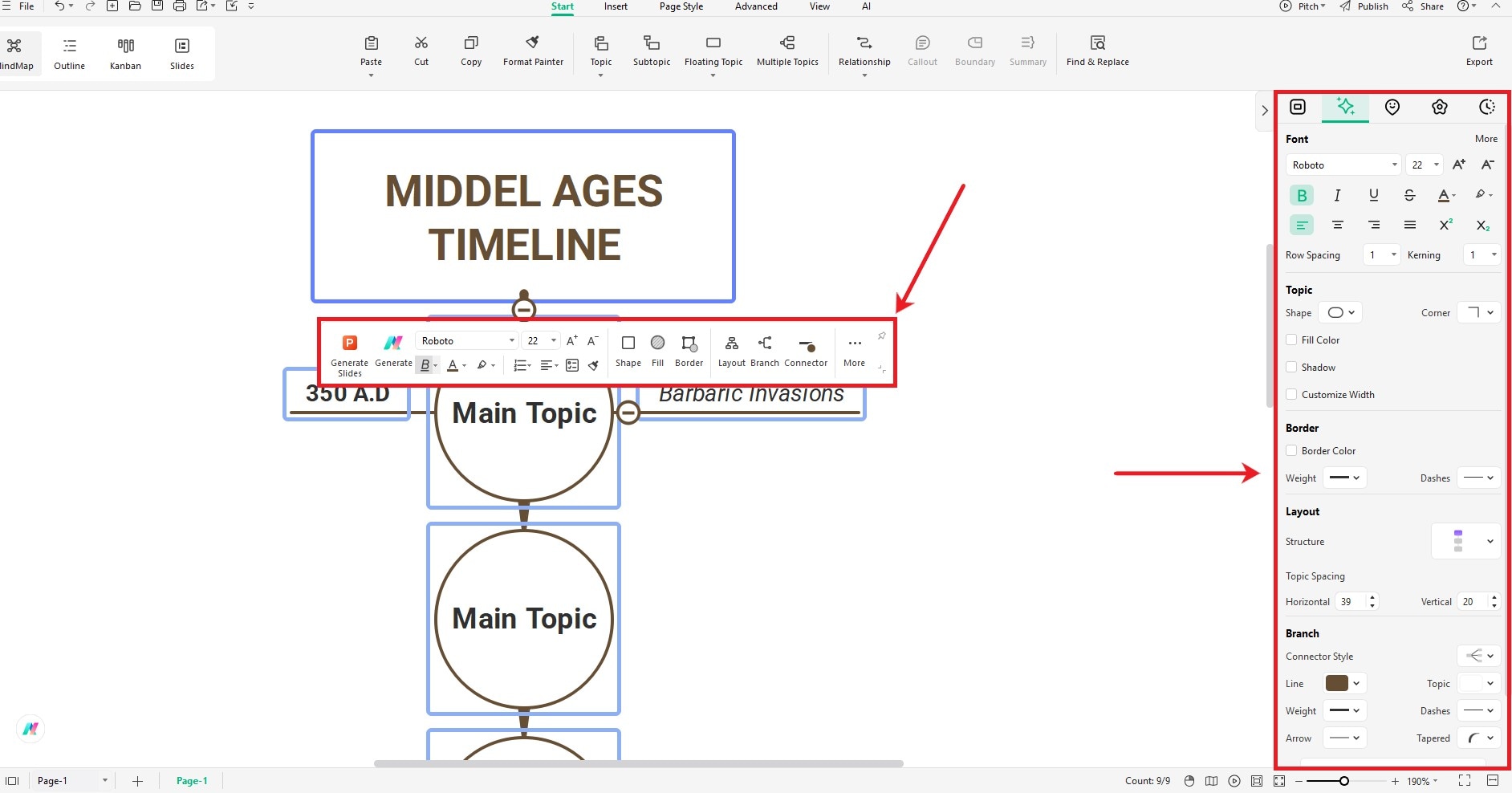
Step 5: Add Images
- Download the image you want to use and open it in EdrawMind.
- Use the floating menu and the right toolbar to change the image settings.
- Click and drag the image, then drop it onto a topic to add it to your timeline.
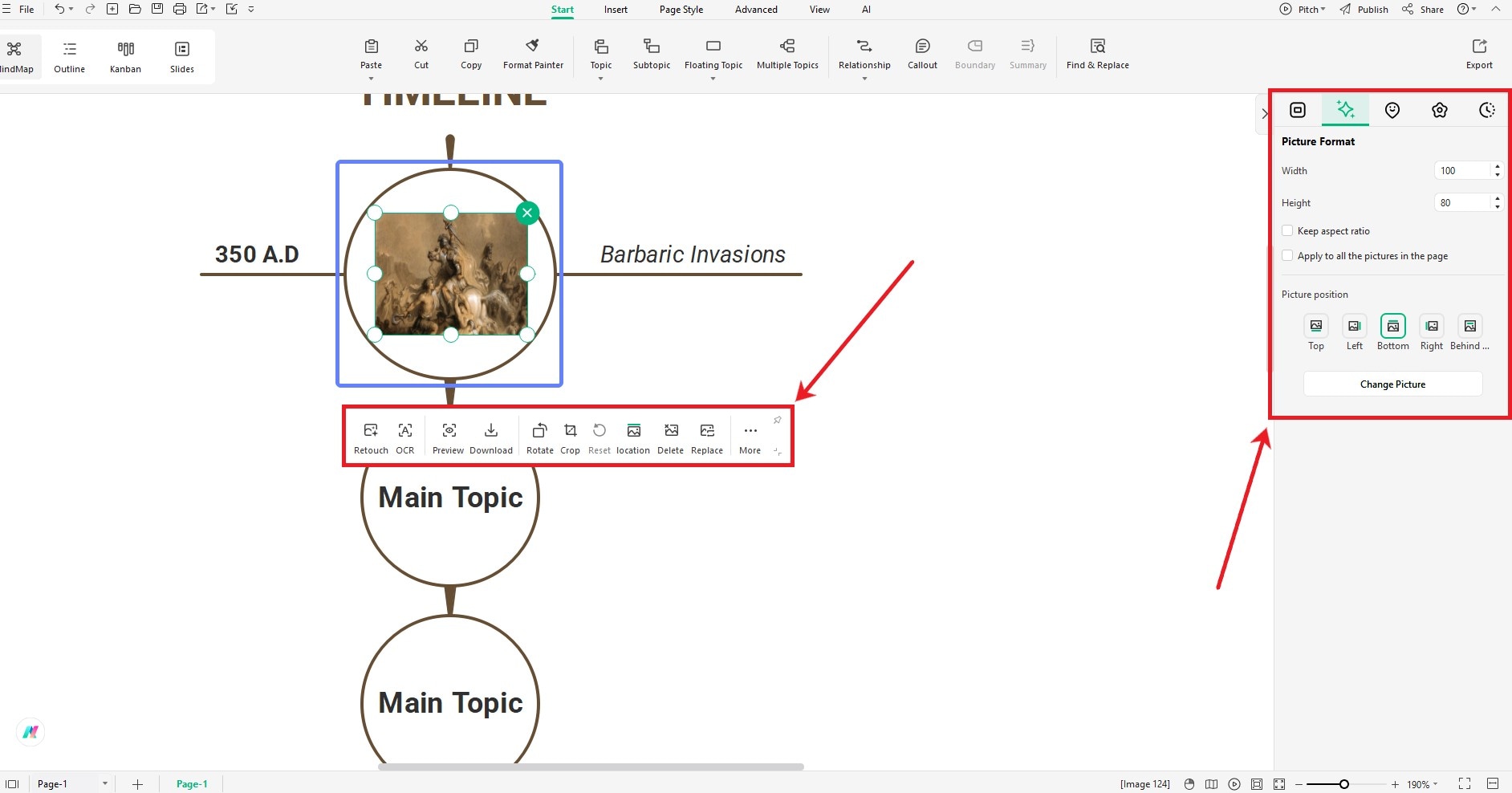
Step 6: Save or Export
- When you're finished, click the File button at the top-left corner.
- Select Save to download the file in its default format.
- Or, click Export and choose the format from the list of PNG, JPG, PPT, PDF, and more options.
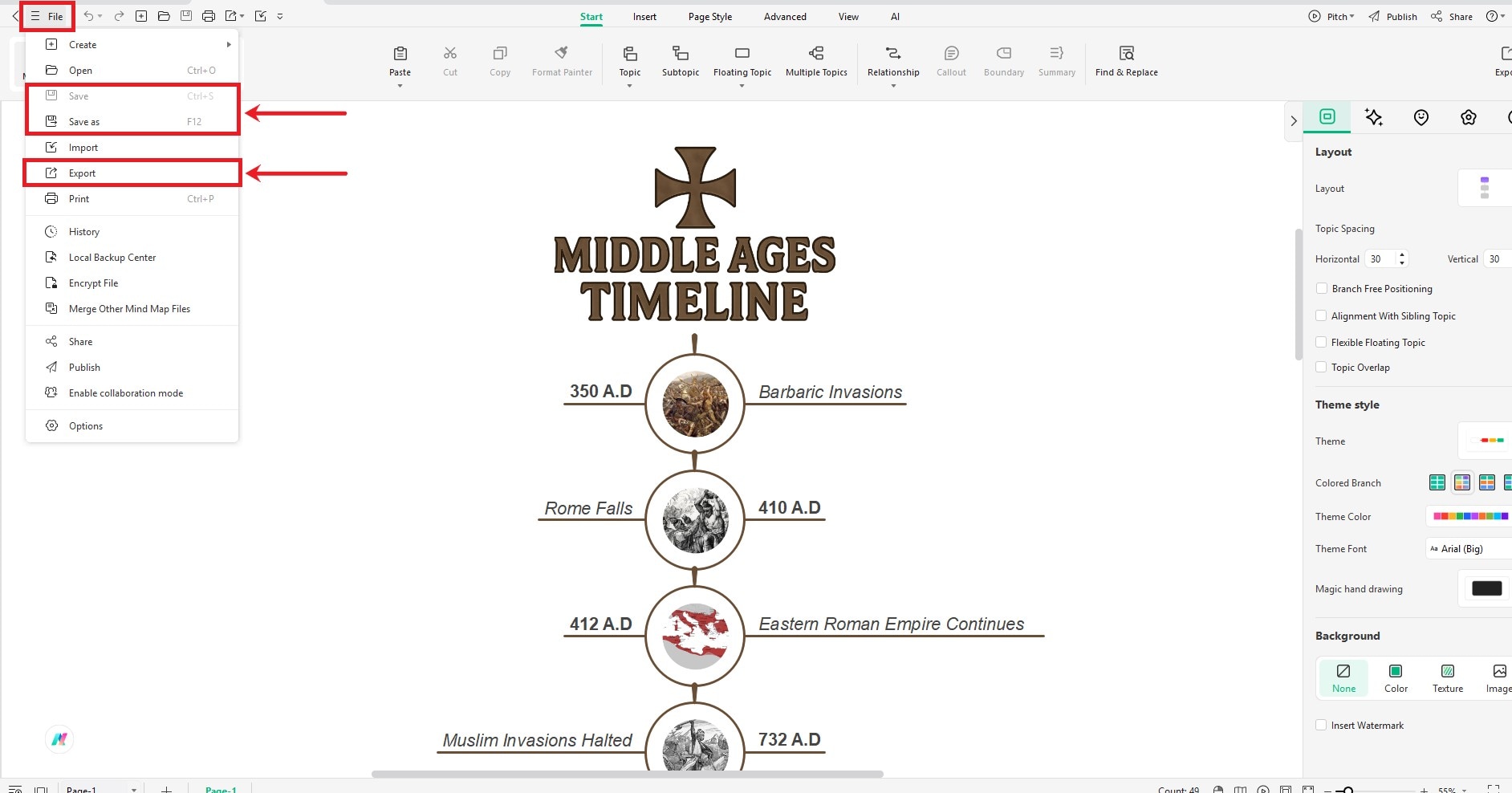
Closing Remarks
You've just walked through 1,000 years of history. The Middle Ages were full of battles, ideas, and big changes. Kingdoms rose and fell. New ways of thinking began to grow. This period laid the foundation for the modern world. Without it, Europe, and the world would be very different today.
Now you know when the Middle Ages started - and how they ended. So, do you want to make sense of it all? Try EdrawMind to build your own timeline or study map. It's fast, visual, and easy to use.



